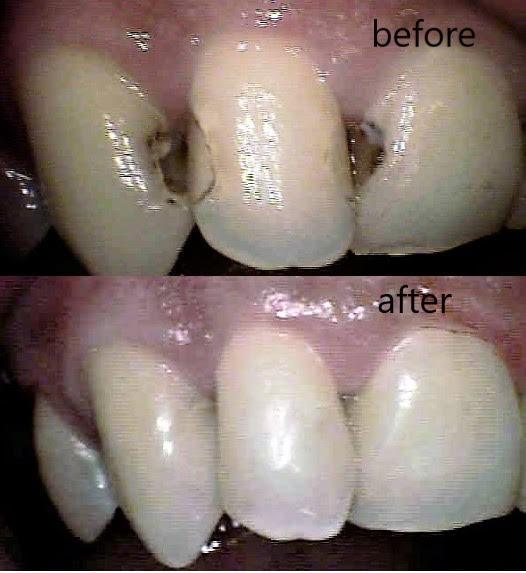When are fillings needed?
Dental decay or caries is caused by bacteria penetrating through the outer enamel of a tooth into the subsurface called the dentine. Once decay has started in a tooth, it will keep progressing until measures are taken. If the decay is detected very early one and is only in the outer enamel layer, preventive measures can be taken to arrest the progress. These include improved home care, reduction of dietary sugar, and topical application of fluoride treatments. In the early stages of decay development, there is usually no pain from the affected tooth. When symptoms are experienced, it usually indicates that the decay is very advanced and therefore, the filling will be bigger and more complex.
At the Melbourne Smile Clinic, we believe in the preventive approach and early detection. This is why taking x-rays is necessary, so as to detect decay early.
How are fillings done?
The decay is cleaned from the tooth under local anaesthetic, leaving a cavity in the tooth. This cavity has to be filled and sealed to prevent further entry of bacterial into the tooth and protect the exposed dentine subsurface, which otherwise would be sensitive.
A filling material is therefore used to fill the cleaned cavity.
The material most commonly used nowadays is RESIN COMPOSITE.
Resin composite consists of silica or zirconia particles held together by a resin matrix.
The resin composite filling material comes in various shades to match the natural tooth colour to achieve a natural result where the filling does not stand out from the rest of the tooth.

These decayed front teeth have been filled with resin composites
What are the Advantages of resin composites:
- Tooth coloured material that can be made to blend in with the natural tooth surface, allowing an aesthetically pleasing result.
- The resin composite has chemical properties that allows it to be bonded to the tooth surface, allowing a good long-term retention of the filling into the tooth
- Resin composite fillings can easily be repaired or replaced if they wear down or chip.
- Resin composite has good fracture and wear resistance under normal chewing forces.
What are the Disadvantages of resin composites:
- Placement of a resin composite in a tooth is technique- sensitive. The operator must ensure the tooth is dry and uncontaminated with saliva during placement of the filling as otherwise, the material will fail to bond properly to the tooth surface and will fail more quickly.
- For larger cavities, resin composite is not as long-lasting and can wear down or fracture more easily. In such cases, ceramic materials are preferable.
- Resin composite fillings can stain over time and lose their surface sheen. Polishing the filling can restore the filling but can lead to surface wear over time until replacement is necessary
How long do fillings last?
Several factors affect how long a filling can last. These are:
- Size of the filling- the larger a filling is, the higher the likelihood of failure or other complications as a large filling means that there was a large amount of decay in the tooth to start with. With extensive decay, a tooth is more likely to develop further issues such as nerve inflammation.
- The location of the tooth in the mouth affects the likelihood of the filling failing. A filling in a back tooth that does most of the chewing can wear down or chip more easily than a filling in a front tooth.
- Oral hygiene level will affect the lifetime of a filling. With poor oral hygiene, there is a higher likelihood of decay developing again under or around an existing filling, causing failure.
- A diet high in sugary and acidic foods can also lead to increased rates of decay under and around existing fillings.
The higher the number of fillings a person has, the more important it is to have good oral hygiene, avoid frequent sugary foods, have regular checks and cleans at the dentist in order to maximise the lifetime of the fillings.









